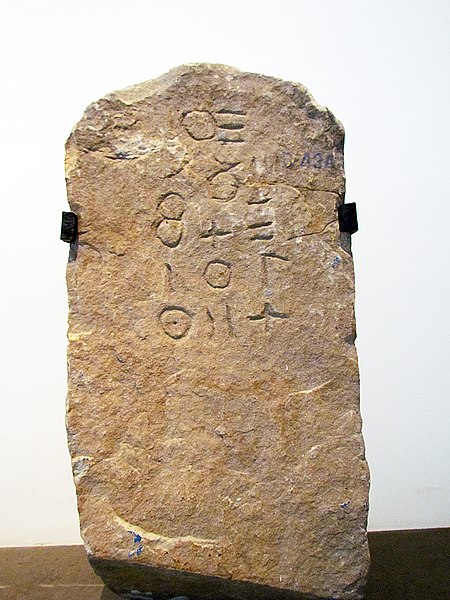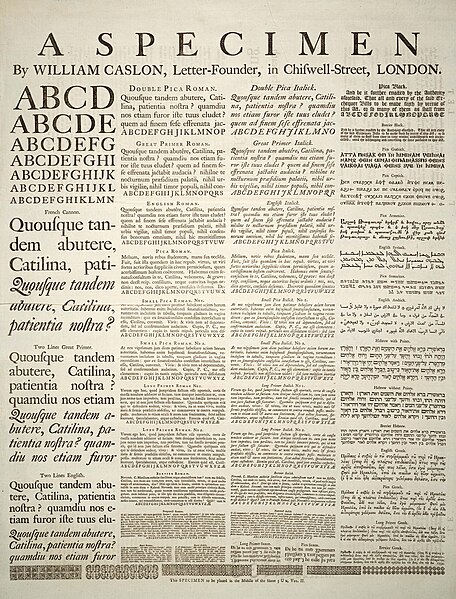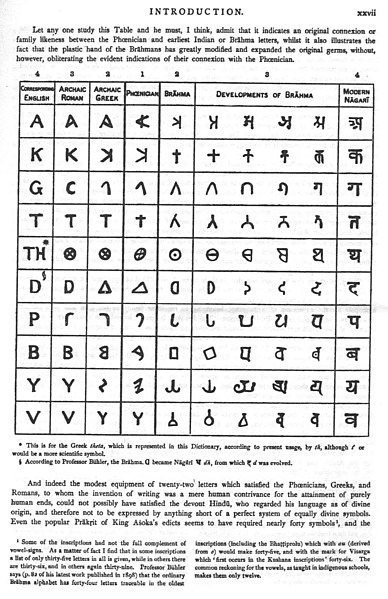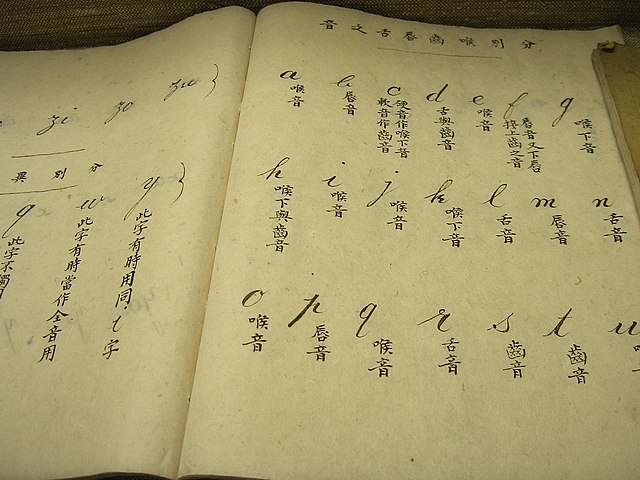The Libyco-Berber alphabet or the Libyc alphabet is an abjad writing system that was used during the first millennium BC by various Berber peoples of North Africa and the Canary Islands, to write ancient varieties of the Berber language like the Numidian language in ancient North Africa.
Libyco-Berber alphabet
Libyco-Berber inscriptions in Oukaimeden, Morocco.
Vertical Libyco-berber "Eastern" alphabet on a funerary stele found in Sidi Ali Bahloul, Jedilane-Rouha region, Tunisia (Sbeitla's archeological museum)
Numidian stela in Bardo National Museum (Tunis)
A writing system comprises a particular set of symbols, called a script, as well as the rules by which the script represents a particular language. Writing systems can generally be classified according to how symbols function according to these rules, with the most common types being alphabets, syllabaries, and logographies. Alphabets use symbols called letters that correspond to spoken phonemes. Abjads generally only have letters for consonants, while pure alphabets have letters for both consonants and vowels. Abugidas use characters that correspond to consonant–vowel pairs. Syllabaries use symbols called syllabograms to represent syllables or moras. Logographies use characters that represent semantic units, such as words or morphemes.
Written Chinese uses morphosyllabic characters assembled from phonetic and semantic components in order to encode the spoken language
A Specimen of typefaces and styles, by William Caslon, letter founder; from the 1728 Cyclopaedia
Table of scripts in the introduction to Sanskrit-English Dictionary by Monier Monier-Williams.
This textbook for Puyi shows the English alphabet. Although the English letters run from left to right, the Chinese explanations run from top to bottom then right to left, as traditionally written.








